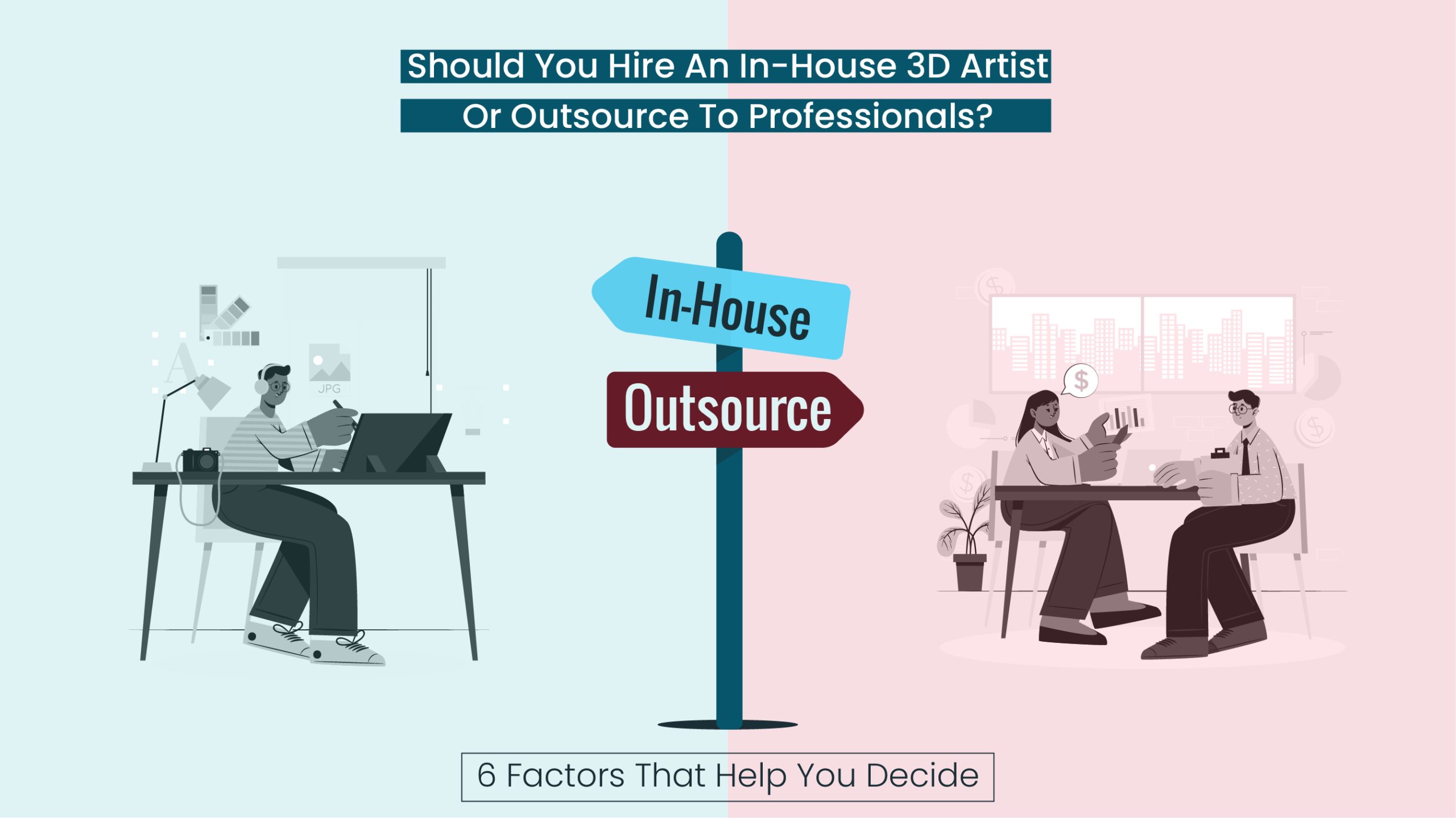
You can associate with a long-term partner and outsource the storyboarding, conceptualization, modeling, texturing, and lighting of the entire 3D model to that expert company. But then again, what makes it more practical for you to go for an in-house 3D artist? You will keep on oscillating between two extremes until you have examined the entire situation yourself. This blog is going to help you do just that. Consider the following factors before you make a decision:
1. 3D Development Infrastructure
Are you willing to invest in a permanent 3D development infrastructure within your company? Do you have the resources for it? Do you have the capital and the talent to pull this off? You must be willing to invest in utilities, hardware, software, regular training, office expenses, and more. If yes, you should go for an in-house 3D artist. If not, your answer is a third-party 3D modeling service provider.
2. Resources, Equipment, and Workspace
In-house 3D artists would ask for office space, hardware and software, and other necessary equipment. In addition to this, you will have to spend time and effort hiring a new member of staff. This hampers your ability to utilize this space for other purposes. Furthermore, you will have to invest in items such as desks, chairs, ventilation, stationary, and storage options. You might also have to invest in the latest training modules for the newly hired resources which is going to take more from your working capital.
3. Competence And Capability
A 3D development project for any of your products can be either large-scale or small-scale. In any case, it is going to be highly time-sensitive, and it may require a lot of 3D renders too. If you are looking to create a series of photorealistic 3D animations, you must have sufficient time and technical resources. If you decide to focus on 3D modeling instead of your core operations, you will be deviating from your business activities where your capabilities and competency lie. It is therefore better to leave this bit to professional specialists who are trained in this niche. This makes more sense because then you will be able to fulfill the role you are meant to and that is of a manufacturer/retailer/seller.
4. Nature Of Your Projects
For example, if you are in the process of producing a super confidential product, you might want to associate with a 3D modeling and texturing artist who can work within the premises of your company. But if you are focusing on your run-of-the-mill manufacturing line, a third-party 3D rendering company will be a more practical choice.
5. Viability Of Either Choice
All in all, you will also have to consider whether either of the choices is more viable than the other. For example, you do not need to produce 3D models or representations of your products throughout the year. It is a one-time process. Once you invest in a 3D asset, it can be edited, altered, and modified as per your requirements. For this, you don’t need to set up an entire 3D development infrastructure or even make a 3D artist your permanent employee. Outsourcing will work just fine.
6. Incomparable Speed
Let’s just say that you have somehow captured the financing to install 3D modeling infra in your company. You have started practicing on the latest software too. But there is a catch. You will need months of experience working with those platforms before you can produce a realistic and highly customizable 3D asset. It is safe to say that your gestation period will be unusually long. Your customers are not going to wait that long.
Final Thoughts
This is a very clear decision. The way you function and the resources and capital at your disposal, in addition to the frequency at which you want to produce your 3D models are going to dictate which way you should go. Now you know which path to take.